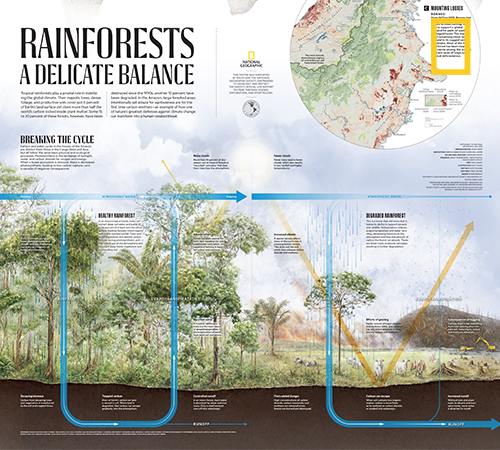So why is tossing food into a landfill so bad? Turns out there’s another greenhouse gas💨💨 we often overlook.
Learn more at the interactive story “The other greenhouse gas“.
The star of the story is “Methane”. We wanted readers to easily compare with the well-known “CO2”. Hence, the gas characters were born! Why does CO2 look so old? CO2 outlasts Methane by A LOT, so reducing methane is a more impactful solution to combat near-term.
Methane vs CO2
What makes methane much more potent than CO2? I wanted to explain the science visually, which accidentally led me to learning atmospheric physics & deciphering complex graphs. Big thanks to our patient expert Neil Donahue breaking down the details for us.
Research content
It was gratifying to gain pHD-level insights. But the bigger challenge was to visualize the complexity and simplify with analogies to connect with our readers. After many rounds of storyboarding and trying to make the illustrations cute, it still seemed too complicated.
UX sketches
That’s why we need amazing colleagues as reporters to pull us out of the weeds! Thanks to Ally Levine for reminding me of the big picture goal. We decided to zoom in to how methane blocks a crucial atmospheric window.
explainer storyboard
Food, being nutritious+moist, feeds microbes🦠to make more methane in landfills then other wastes.Yet more food reaches landfills than any other material! Think again when tossing out moldy leftovers.
Food is lost at each point in the production chain, yet “homes” are the biggest food waste contributors, and almost half of that goes to garbage! We wanted to combine @refed’s latest breakdown with @EPA’s wasted food flow sanky:
Sanky design
When we talk about global warming, we think about CO2. But methane is worth some attention because we can actually do something about it! Learn all about methane gas and how to prevent it from further warming the planet 💨
Check out my other projects!



























































































